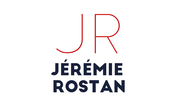 With thousands of AI tools already made available since generative AI suddenly came to prominence among the general public just a few months ago, educators might rightfully feel overwhelmed and lost, excited and desperate all at once. My e-book AI-Powered UDL Strategies was an early attempt to make sense of and harness this déluge. Still, with 90 options and many tools available, it begs the question: where to start? And the obvious answer is: with low-hanging artificial fruits. Fortunately, there is a simple framework, or algorithm, any teacher can use to determine what they are in their specific context. As shown in the diagram below, the most fruitful application of AI tools in an education context is a function of: TECHNOLOGY What AI can do, based on its current level of development and limitations. IMPACT What students can use help with to reach their full potential, whether it is greater differentiation, active learning, etc. EFFICIENCY What teachers can use help with to make their work easier and more productive. RESOURCES What access teachers and students have to AI capabilities based on internal (e,g., training) and material resources. When deciding where to start, it is thus rational to focus on areas where:
For instance, number 50 in our list of 90 AI-Powered UDL Strategies is: “Use chatbots to determine the key vocabulary needed to access a unit/lesson and achieve the targeted standards, as well as to create a glossary”. This particular application is clearly a low-hanging artificial fruit, and thus a great place to start, as:
From there, a logical next step might be to add translations in relevant languages (56), including English (52), and then to teach students how to use AI to create such scaffolds for themselves (53). Or it might be to branch out and use a similar process on a more complex task, such as articulating standards and benchmarks across units and grade levels (72). The useful integration of AI and implementation of AI-Powered Strategies will look different for each teacher, depending on their context; but the underlying “algorithm” will remain the same, and will create “tiers” of applications, where the most simple and powerful uses of AI in education should come first. Understanding a little bit better what AI can do in education, e.g., in relation to UDL, and where this journey can start, the next question becomes: how can we take full advantage of it? As I explained in a previous article, this actually requires Thinking Outside the Bots, i.e., prompt design and critical thinking.
0 Comments
Your comment will be posted after it is approved.
Leave a Reply. |
|
Proudly powered by Weebly

